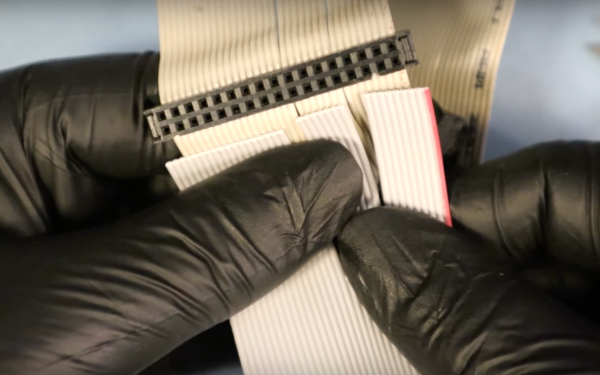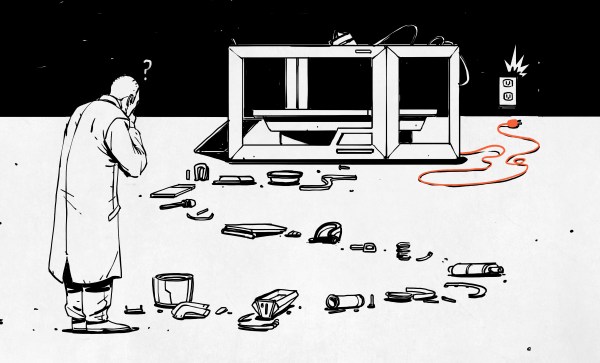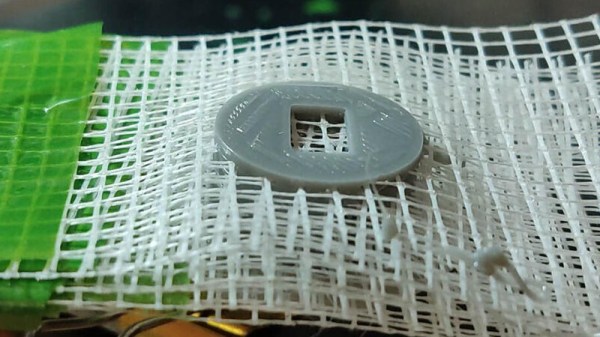Members of Pixelbar woke up to shocking news on Wednesday morning this week as they learned that a fire had destroyed the building housing their Rotterdam hackerspace. Pictures of the fire are pretty dramatic and show the entire building ablaze. We’re not familiar with Pixelbar specifically, but most hackerspaces seem to share space with other businesses in repurposed warehouses and other industrial buildings, and it looks like that was the case here. Local coverage doesn’t indicate that a cause has been determined, but they do say that “large batches of wood” were stored in or near the structure, which likely contributed to the dramatic display. There don’t seem to be reports of injuries to civilians or first responders, so that’s a blessing, but Pixelbar seems to have been completely destroyed. If you’re in a position to help, check out their GoFundMe page. As our own Jenny List, who currently lives in The Netherlands, points out, spaces suitable for housing a hackerspace are hard to come by in a city like Rotterdam, which is the busiest port in Europe. That means Pixelbar members will be competing for space with businesses that have far deeper pockets, so anything you can donate will likely go a long way toward rebuilding.
Crafting Ribbon Cables For Retro Hardware
Building a modern computer is something plenty of us have done, and with various tools available to ensure that essentially the only thing required of the end user is to select parts and have them delivered via one’s favorite (or least expensive) online retailer. Not so with retro hardware, though. While some parts can be found used on reselling sites like eBay, often the only other option is to rebuild parts from scratch. This is sometimes the best option too, as things like ribbon cables age poorly and invisible problems with them can cause knock-on effects that feel like wild goose chases when troubleshooting. Here’s how to build your own ribbon cables for your retro machines.
[Mike] is leading us on this build because he’s been working on an old tower desktop he’s calling Rosetta which he wants to be able to use to host five different floppy disk types and convert files from one type to another. Of course the old hardware and software being used won’t support five floppy disk drives at the same time so he has a few switches involved as well. To get everything buttoned up neatly in the case he’s building his own ribbon cables to save space, especially since with his custom cables he won’t have the extraneous extra connectors that these cables are famous for.
Even though, as [Mike] notes, you can’t really buy these cables directly anymore thanks to the technology’s obsolescence, you can still find the tools and parts you’d need to create them from scratch including the ribbon, connectors, and crimping tools. Even the strain relief for these wide, fragile connectors is available and possible to build into these projects. It ends up cleaning up the build quite nicely, and he won’t be chasing down any gremlins caused by decades-old degraded multi-conductor cables. And, even though [Mike] demonstrated the floppy disk drive cables in this build, ribbon cable can be used for all kinds of things including IDE drive connectors and even GPIO cables for modern electronics projects.
Continue reading “Crafting Ribbon Cables For Retro Hardware”
This CRT-Style Pi Portable Gets All The Details Right
A quick glance at the “Pi Terminal” built by [Salim Benbouziyane], and you might think he pulled an old CRT monitor out of a video editing bay and gutted it. Which, of course, is the point. But what you’re actually looking at is a completely new construction, featuring a fully 3D printed enclosure, a clever PCB control panel, and some very slick internal engineering.
[Salim] started the design by recreating the principle components of the build, namely the 8 inch 4:3 IPS LCD panel and Raspberry Pi 4, digitally in CAD. This let him design the enclosure around the parts, rather than trying to cram everything in after the fact. After printing the case, which clearly took considerable inspiration from broadcast video monitors of the early 2000s, he then painstakingly post-processed the parts using tips and techniques picked up from prop builders. To really finish things off, he designed his control panel as a PCB so he could have it professionally fabricated, and used heat set inserts to hold everything tight. Continue reading “This CRT-Style Pi Portable Gets All The Details Right”
Hackaday.io Low-Power Challenge Begins Today
How low can you go? The 2023 Hackaday.io Low-Power Challenge is about doing the most with the least juice – bang for the power-budget buck, if you get our drift. And with three $150 gift certificates from Digi-Key on the line, you’ll be able to keep your projects going forever. The Challenge runs until March 21st, but with low-power, the devil is often in the details, so get started today!
More and more projects need to run on their own power, and more often than not, that means getting by without access to a wall plug. This contest is to encourage your designs that run on solar, small batteries, and generally energy harvested from wherever you can get it. But the power generation mechanism is taking the back seat here – we want to see what you can do with a few good electrons. Surprise us with your maximum minimalism!
Continue reading “Hackaday.io Low-Power Challenge Begins Today”
3D Printering: Can You Ever Have Enough Vitamins?
As a community we owe perhaps more than we realise to the RepRap project. From it we get not only a set of open-source printer designs, but that 3D printing at our level has never become dominated by proprietary manufacturers in the way that for example paper printing is. The idea of a printer that can reproduce itself has never quite been fully realised though, because of what the RepRap community refer to as “vitamins“.
These are the mass-produced parts such as nuts, bolts, screws, and other parts which a RepRap printer can’t (yet) create for itself. It’s become a convenience among some of my friends to use this term in general for small pieces of hardware, which leads me to last week. I had a freshly printed prototype of one of my projects, and my hackerspace lacked the tiny self-tapping screws necessary for me to assemble it. Where oh where, was my plaintive cry, are the vitamins!
So my hackerspace is long on woodscrews for some reason, and short on machine screws and self-tappers. And threaded inserts for that matter, but for some reason it’s got a kit of springs. I’m going to have to make an AliExpress order to fix this, so the maybe I need you lot to help me. Just what vitamins does a a lone hardware hacker or a hackerspace need? Continue reading “3D Printering: Can You Ever Have Enough Vitamins?”
Ask Hackaday: What’s Your Worst Repair Win?
Like many of you, I’ve become the designated “fix-it” person for my family and friends. While it can be a lot of work — I just finished an oil change that required me to lay in a cold, wet driveway and I can’t mention in polite company the substances I was bathed in while fixing a clogged pipe last week — I generally relish my role. I enjoy solving problems, I love working with my hands and my head, and who doesn’t like saving money and time?
But for me, the best part of being the fix-it guy is the satisfaction that comes from doing something others can’t do. I find this especially true with automotive repairs, which conventional wisdom says is strictly the province of factory-trained experts. A little bit of a hero complex, perhaps? Absolutely! After all, I don’t get paid for my repairs, so I’ve got to get a little something for the effort.
This is why a recent pair of unrelated fixes left me feeling thoroughly unsatisfied. Neither of these jobs was a clear win, at least in terms of getting the rush of being able to do something that nobody else could. At best, these were qualified wins, which both still left me feeling a little defeated. And that got me thinking that I’m probably not the only one who has had marginal repair wins like these.
Continue reading “Ask Hackaday: What’s Your Worst Repair Win?”
Fiberglass Mesh For Stronger 3D Prints
There are many clever ways to make stronger 3D prints, be they by the use of special slicing algorithms or by unusual filaments. [Brtv-z] has taken a more straightforward tack, by making glass-reinforced prints using painters fiberglass mesh tape.
It’s a laborious technique that involves stopping the print to manually place the fiberglass at each successive millimeter of print. The resulting test piece comes off the print bed festooned with fiberglass mesh, and once it’s been trimmed, he subjects it to some tests which you’ll see in the video below the break(Russian language, but there are subtitles).
The tests are fairly rough and ready involving a hammer (we winced at the hammering in a vice, but of course this piece isn’t forged steel!) and standing on a flat piece of print balanced between two blocks. As you’d expect, the reinforced piece appears the stronger, but these tests would benefit from a calibrated set-up to quantify the strength.
So if you’re of a mind to experiment, this certainly seems like an accessible if rather tedious way to make glass reinforced 3D prints. If you then want to characterize them, remember this can be done with a bit of farmyard engineering if you have nothing better.


















